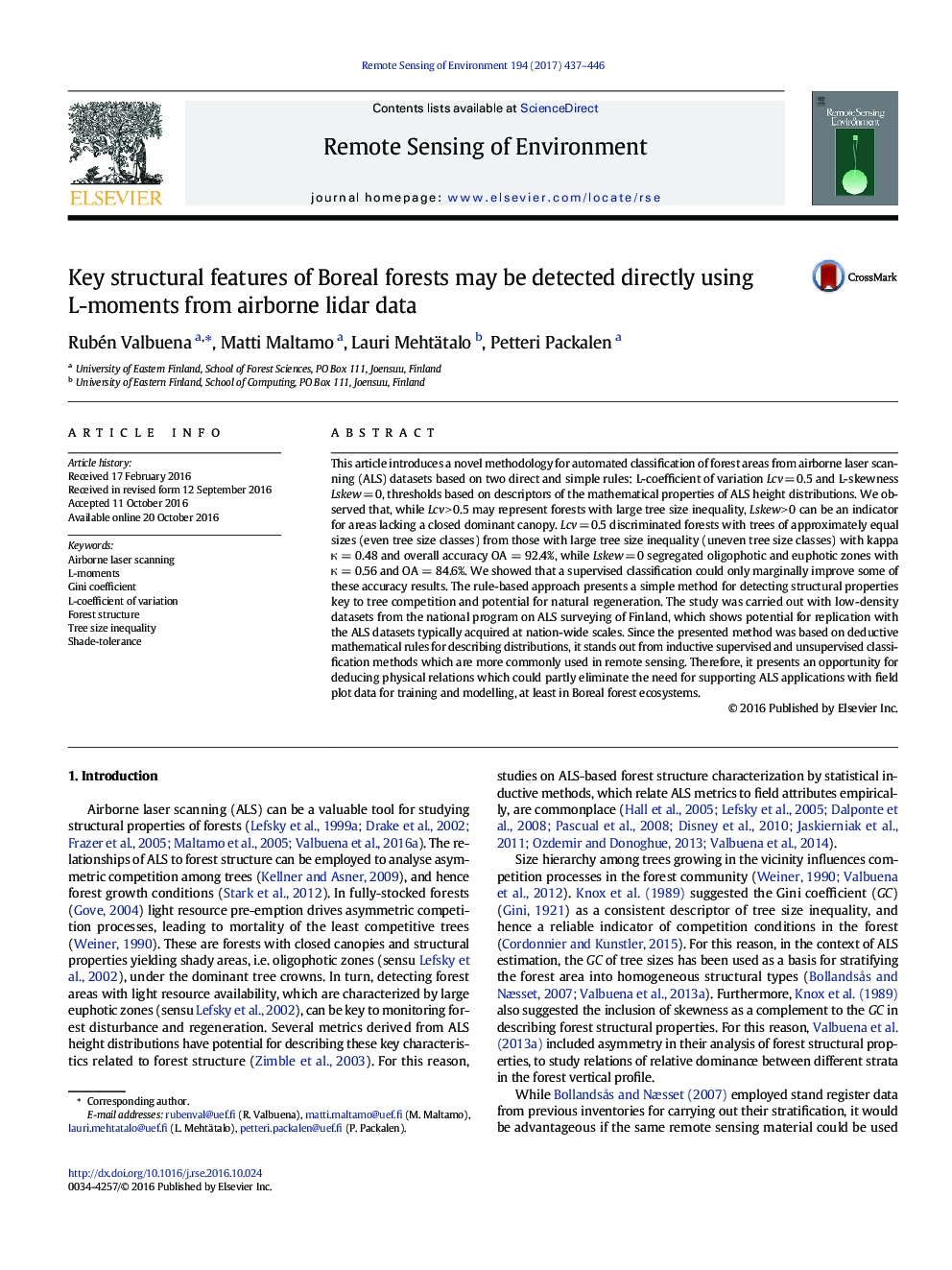| کد مقاله | کد نشریه | سال انتشار | مقاله انگلیسی | نسخه تمام متن |
|---|---|---|---|---|
| 5754985 | 1621206 | 2017 | 10 صفحه PDF | دانلود رایگان |

- Rule-based methods for classifying lidar height distributions using no field data.
- L-coefficient of variation Lcv > 0.5 of lidar heights denotes tree size inequality.
- Proof of equivalence between Gini coefficient and L-coefficient of variation.
- L-skewness Lskew > 0 of lidar heights denotes canopy closure.
- Rule-based method is only marginally outperformed by supervised classification.
This article introduces a novel methodology for automated classification of forest areas from airborne laser scanning (ALS) datasets based on two direct and simple rules: L-coefficient of variation Lcv = 0.5 and L-skewness Lskew = 0, thresholds based on descriptors of the mathematical properties of ALS height distributions. We observed that, while Lcv > 0.5 may represent forests with large tree size inequality, Lskew > 0 can be an indicator for areas lacking a closed dominant canopy. Lcv = 0.5 discriminated forests with trees of approximately equal sizes (even tree size classes) from those with large tree size inequality (uneven tree size classes) with kappa κ = 0.48 and overall accuracy OA = 92.4%, while Lskew = 0 segregated oligophotic and euphotic zones with κ = 0.56 and OA = 84.6%. We showed that a supervised classification could only marginally improve some of these accuracy results. The rule-based approach presents a simple method for detecting structural properties key to tree competition and potential for natural regeneration. The study was carried out with low-density datasets from the national program on ALS surveying of Finland, which shows potential for replication with the ALS datasets typically acquired at nation-wide scales. Since the presented method was based on deductive mathematical rules for describing distributions, it stands out from inductive supervised and unsupervised classification methods which are more commonly used in remote sensing. Therefore, it presents an opportunity for deducing physical relations which could partly eliminate the need for supporting ALS applications with field plot data for training and modelling, at least in Boreal forest ecosystems.
153
Journal: Remote Sensing of Environment - Volume 194, 1 June 2017, Pages 437-446